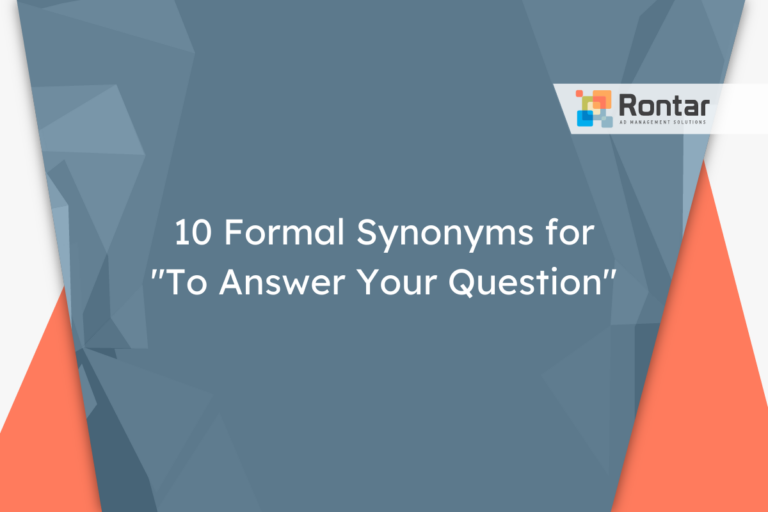10 Other Ways to Say “This Shows” in an Essay

When writing essays, using the phrase “this shows” can get repetitive. It’s important to mix up your language to keep your reader engaged.
This article lists ten different ways to express the same idea, making your writing more interesting and varied. Each alternative is followed by explanations and examples to help you understand when and how to use them effectively.
Is “This Shows” a Good Phrase to Use in an Essay?
Using “this shows” in an essay can be beneficial, but it depends on the context. It’s a straightforward way to indicate that the information you are presenting supports your argument or helps explain your point. However, using this phrase repeatedly might make your writing seem less polished.
Here’s an example of how to use it:
The increase in temperature over the last 50 years aligns with increased carbon emissions. This shows a direct correlation between human activity and global warming.
Let’s weigh the pros and cons of using “this shows” in your writing.
Pros:
- Clear and directly points out the significance of the evidence.
- Helps connect the evidence to your argument or thesis statement.
- Easy to understand and use.
Cons:
- Can become repetitive if overused.
- Might seem too simple or lack sophistication in formal essays.
- Doesn’t offer variety in sentence structures.
While “this shows” is handy, you might want to consider alternatives, especially if you’re aiming for a more polished and varied writing style. Using synonyms or different phrases can add depth to your essay and keep your readers engaged.
10 Other Ways to Say “This Shows” in an Essay
Finding the right words to connect your ideas can make your essay shine. Here are ten alternatives to “this shows” that can help:
- This demonstrates
- This indicates
- This suggests
- This reveals
- This proves
- This establishes
- This confirms
- This supports
- This underscores
- This exemplifies
1. This demonstrates
This alternative is somewhat more formal than “This shows”, making it a good fit for academic essays. It implies a stronger link between evidence and assertion, suggesting a more thoughtful analysis. When comparing, “this demonstrates” carries an air of scientific precision or academic rigor, emphasizing the process of showing.
We recommend using “this demonstrates” when your evidence strongly supports your argument. It’s especially useful in contexts where you want to highlight thorough research or definitive proof. Think of situations where the connection between your examples and your main point needs to be unmistakable and grounded in professional analysis.
Here are a couple of examples:
The decline in local bird populations this demonstrates the negative impact of urban sprawl on wildlife.
Increasing customer satisfaction scores this demonstrates the success of our new service initiative.
2. This indicates
“This indicates” is a neutral phrase that fits well in both formal and informal essays. It’s less forceful than “this proves” but still shows a clear connection between evidence and conclusion. It’s like pointing something out rather than making an outright declaration.
Use “this indicates” when you want to suggest a conclusion rather than assert it definitively. It works well when you’re drawing inferences from data or observations, particularly in situations where there might be multiple interpretations.
Examples:
The increase in online sales this indicates a shift in consumer behavior toward digital shopping.
A drop in attendance this indicates possibly waning interest in traditional events.
3. This suggests
“This suggests” is an ideal choice for making gentle or speculative connections in your writing. It’s even less forceful than “this indicates”, perfect for when you’re presenting hypotheses or possibilities. It’s a polite way to introduce an idea that’s inferred rather than directly supported by the evidence.
This phrase is better suited for essays where you’re exploring potential outcomes or reasons, especially when direct evidence is not available. It’s also appropriate in informal contexts where maintaining a conversational tone is important.
Examples:
The high response rate to the survey this suggests strong employee engagement with the subject.
An increase in average temperatures this suggests global climate change impacts.
4. This reveals
“This reveals” is powerful because it suggests uncovering or discovering something previously hidden. It’s perfect for when you want to highlight insights or findings that are unexpected or particularly enlightening. The phrase holds a bit of drama, making it great for engaging readers.
When your evidence uncovers new information or contradicts common assumptions, “this reveals” is an excellent choice. It’s well-suited for research papers or analytical essays where the goal is to bring new truths to light.
Examples:
The study's findings this reveals a correlation between screen time and attention span.
Employee feedback this reveals underlying issues with company culture.
5. This proves
Among our list of synonyms, “this proves” is among the most assertive. It’s used to claim that the evidence conclusively supports your argument. Because of its strong implication, it’s best reserved for formal contexts where you have robust data or clear examples to back up your point.
This phrase is particularly effective in argumentative essays or research papers where establishing factual correctness is essential. It’s about as close as you can get to saying “this is irrefutable.”
Examples:
The overwhelming majority vote this proves the community's support for the new policy.
Scientific experiments this proves the theory's accuracy beyond a doubt.
6. This establishes
“This establishes” is similar in weight to “this proves” but with a slightly less aggressive tone. It suggests setting up a firm foundation for your argument or theory. This wording is especially useful in formal essays and academic writing where clarity and precision are paramount.
We recommend “this establishes” when you’re building up an argument step by step, and your evidence serves as a crucial piece of the puzzle. It shines in contexts where demonstrating the credibility or reliability of your claim is key.
Examples:
Recent findings this establishes a new understanding of the phenomenon.
The archive documents this establishes the historical timeline accurately.
7. This confirms
“This confirms” signals that your evidence directly supports or validates an existing theory or hypothesis. It’s less about revelation and more about verification, making it a professional choice for reinforcing your points in a formal essay.
It’s best suited for situations where you’re addressing anticipated outcomes or established theories. This alternative brings an air of finality and affirmation, particularly in scientific or analytical papers.
Examples:
The recent experiment this confirms the predicted results exactly.
User testimonials this confirms the product's effectiveness as advertised.
8. This supports
“This supports” is flexible, fitting nicely into both formal and informal contexts. It indicates that your evidence upholds your argument but does so in a way that’s less definitive than “this proves.” It’s akin to providing backup rather than claiming outright victory.
Use “this supports” when your evidence adds weight to your claim but might not be conclusive on its own. It’s particularly useful in essays where you’re piecing together support from various sources to form a cohesive argument.
See these examples:
Survey feedback this supports the need for a new approach to customer service.
Historical data this supports the theory of cyclical economic trends.
9. This underscores
“This underscores” emphasizes the importance of a particular piece of evidence or point in your argument. It’s a way to highlight significance without asserting direct causation. This term is ideal for formal writing when you want to stress the weight of your findings.
This alternative is better suited when you need to draw attention to how crucial your evidence is to understanding your overall point. It’s like saying, “pay attention here, this is important.”
Examples:
The lack of resources in rural schools this underscores the disparities in education quality.
Recent legislation this underscores the government's commitment to environmental conservation.
10. This exemplifies
“This exemplifies” is a sophisticated way to demonstrate how your evidence serves as a perfect example of your claim. It brings a touch of elegance to your writing, suitable for formal essays where showcasing examples is key to illustrating broader points.
Opt for “this exemplifies” when you have a clear, representative example that neatly encapsulates your argument or theory. It effectively tells your reader, “If you understand this example, you’ll grasp my larger point.”
Examples:
Innovations in technology this exemplifies the rapid pace of modern advancement.
The novelist's unique writing style this exemplifies the literary movement of their time.
Final Thoughts
Switching up the way you say “this shows” in your essays can make your writing stronger and more engaging. By using the ten alternatives we’ve discussed, you can clearly express your ideas and keep your reader’s attention. These phrases help you communicate more precisely and make your arguments more compelling.






